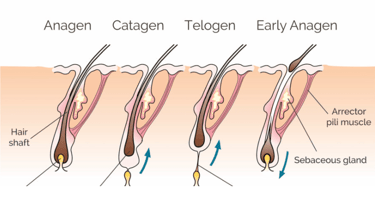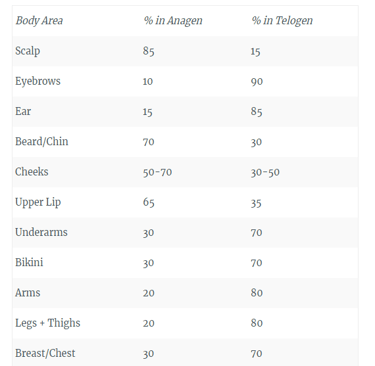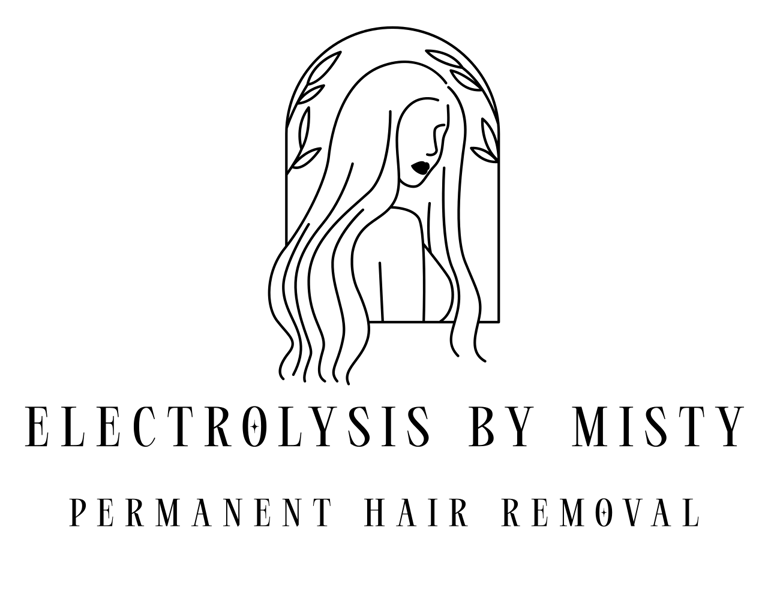What is Electrolysis?
Electrolysis is the only FDA recognized permanent method of hair removal. It involves passing a low-level electrical current through each hair follicle using a metal probe. Electrolysis involves the insertion of a very fine, disposable sterile probe into the hair follicle. A small electrical current is passed into the follicle this damages the follicle and prevents new hair growth.
There are 3 Modalities of electrolysis, they are galvanic, thermolysis and blend electrolysis.
GALVANIC ELECTROLYSIS
This is a 150-year-old modality of electrolysis which uses a chemical reaction to destroy the hair follicle with a direct electrical current. A probe is inserted into the hair follicle and a small electric charge is administered. This reacts with the saline found at the base of the hair follicle and produces sodium hydroxide ( lye ). The presence of the lye then permanently destroys the hair follicle and prevents the hair from re-growing.
THERMOLYSIS
This is a modality which uses an alternating current to create heat which destroys the hair follicle. The probe transmits the current which destroys the target hair follicles and typically takes a few seconds per hair.
BLEND(COMBINATION OF BOTH)
This uses a combination of galvanic electrolysis and thermolysis, utilizing a double-action method. The blend modality uses a combination of heat and current to speed up the galvanic chemical reaction to destroy the hair follicle. This method is slightly slower than thermolysis but is very effective and often used to treat difficult areas.
HAIR GROWTH CYCLES AND ELECTROLYSIS
All hairs on your body grow in cycles with each hair follicle being on its own separate cycle. There are three stages of growth, anagen(growth phase), catagen(transitional phase) and telogen(resting phase), as well as a period of time where a follicle can stay dormant.


Understanding the process of electrolysis treatments
We need to understand the hair growth phases. The anagen phase is the hair growth period which varies depending on the body part. Which is why they never grow past a certain length. Some hairs are in anagen for as little as six weeks while others can last up to three years like the hair on your head. The catagen phase is a transitional phase where the root is starting to disconnect from the blood supply, and it is starting a shedding process. The telogen phase is when the hair follicle is resting and is not actively growing anymore. The telogen phase is where the hair typically will fall out (shed) on its own once a new anagen phase has started below the old hair.
Why is this important for electrolysis?
Hairs in the shedding phase are not attached to a hair follicle which means the electrical current has less effectiveness destroying the hair follicle. This means those hairs could grow back. Typically if they do, they will be thinner and lighter. When this happens we will treat them again in future sessions, to try and treat them in the anagen phase.
It is not possible to look at a hair from the surface and know what phase it is in. So all unwanted hair will be treated. Once it is treated and the hair is removed, then it can be determined what phase that particular hair was in. It is also important to note when a follicle is treated, some damage still occurs to it. Which means hair follicles in the catagen or telogen phases will still be damaged to some degree. This is why if they grow back, they are thinner and lighter in the next anagen phase.
Permanent hair removal for an area, requires several treatments because the hair follicles in the skin are in different growth phases. This is why you need more than one session to get the area completely hairless.
So follow-up sessions are scheduled, to allow the hairs in the dormant phase time to move to the growth phase when the procedure is more effective.


Here is a table showing typical hair growth
Frequently asked questions
What is the difference between Electrolysis and Laser?
Electrolysis is best for hormonally triggered hair, we prefer this method for facial hair because it is a permanent solution. Once a follicle is completely destroyed a hair will no longer be able to grow. Electrolysis works on light, or white hairs and can be done on all skin types.
Laser hair removal is a form of hair reduction. It doesn't completely removal all of the hairs in the treated area, but can soften or lighten the hair. The laser can also put a big percentage of the hairs into a dormant stage of hair growth, which mean the hairs will not grow unless they have a hormonal change. A hormonal change such as changing or starting birth control, pregnancy, menopause or even a menstrual cycle can start the hair growth process again. This is a great option for large and/or dense areas of the body. Laser hair removal can only be done on hairs with pigment. Blond, grey or white hairs can not be treated with laser as the energy is reflected off these colors of hair.
Do I need to shave before my treatment?
No! You want to have 2-3 days of growth in the area being treated, so it is long enough to grab with tweezers. You also want to avoid plucking the hairs in between appointments, so that your electrologist can get each hair in the right stage of growth.
Misty
If I don't answer --Please leave a message or text me
as I won't answer the phone when i'm treating a client
I will getback to you as soon as I can
© 2024. All rights reserved.
Electrolysis permanent hair removal for the Idaho Treasure Valley - Boise, Meridian, Nampa, Kuna, Caldwell, Middleton, Notus, Star, Eagle, Parma, Melba, Fruitland, Payette, Ontario
